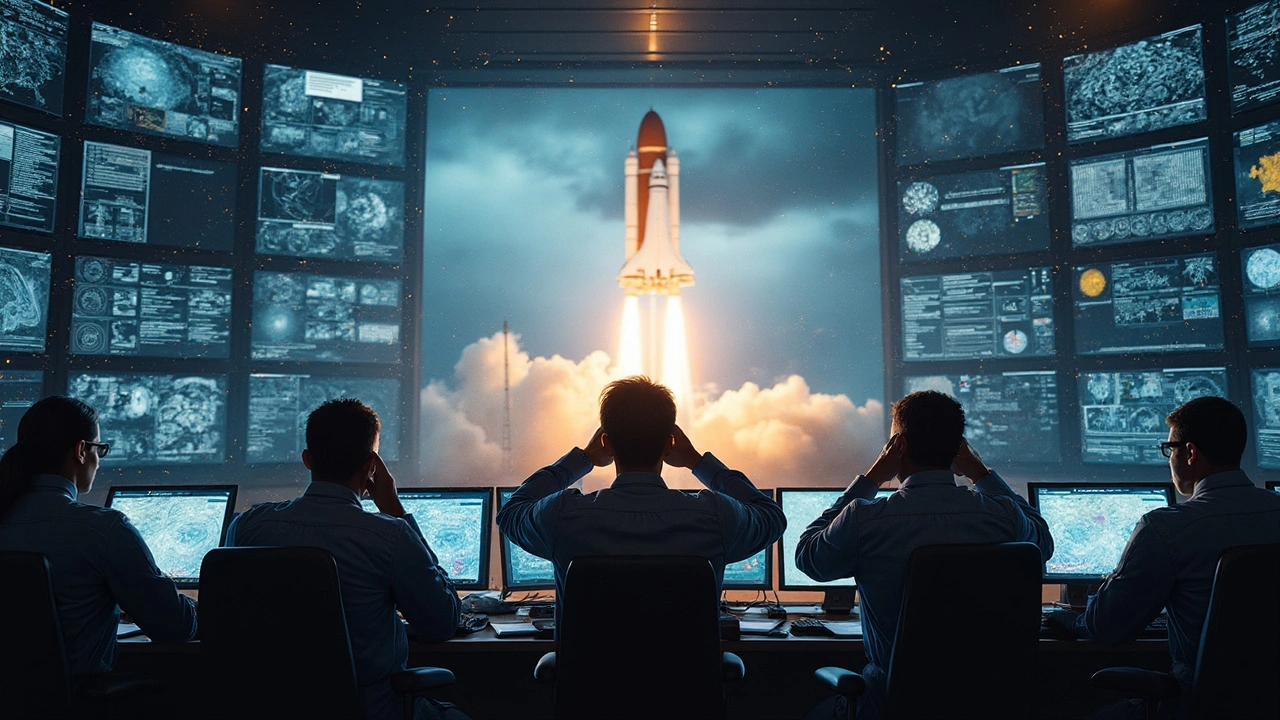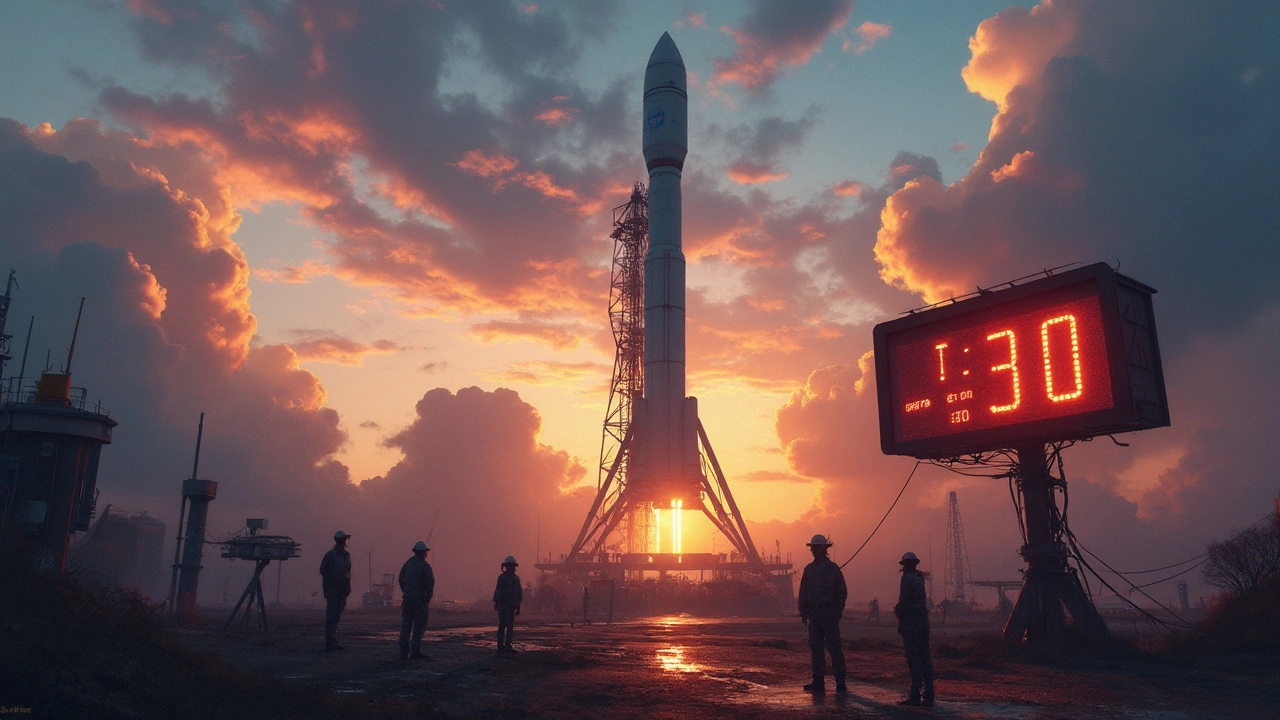Picture this: you're all set to witness Crew-10's launch, and then bam! It's scrubbed at the last moment. What happened? Launch postponements like this one aren’t unheard of, and they often come down to a mix of technical problems, safety concerns, or just plain bad weather.
NASA and its partners usually have a backup plan when things go south. Technical issues, like sensor malfunctions or problems with the rocket's systems, can quickly stop a launch. Sometimes it's minor stuff, but even the tiniest glitch can turn into a big deal in space exploration.
And then there's the weather. You wouldn't believe how much the weather can mess with space missions. No one wants to risk it with unfavorable conditions, because, frankly, safety comes first. Even a slight chance of lightning can be game over for a scheduled launch.
- Technical Glitches: What Went Wrong?
- The Influence of Weather
- Safety First: Protocols and Procedures
- Impact on the Mission Timeline
Technical Glitches: What Went Wrong?
Technical issues are often the main culprits when a launch gets delayed. For the Crew-10 mission, there were several technical setbacks, with one standout issue: a pesky sensor malfunction that led to concerns about the rocket's fuel systems.
The malfunction was spotted during the final checks when one of the sensors failed to provide a reliable reading of the propellant levels. This isn't just a minor hiccup; accurate fuel data is crucial for the rocket's journey and safety of the astronauts. A sensor glitch like this can literally be a make-or-break deal.
"It's not unusual for sensor issues to cause delays," said Dr. Alex Greene, a seasoned NASA engineer. "We need everything to be 100% accurate before launching a manned mission. Safety is our top priority."
In another twist, the launch team was also grappling with unexpected changes in engine performance metrics. These discrepancies necessitated recalibration of several onboard systems which required more time than initially planned.
While these technical issues may seem like a headache, they actually highlight just how much precision goes into planning a space launch. Everyone involved aims for a flawless mission, so they’d rather take extra time to fix problems than risk an unexpected shutdown during the ascent.
On a lighter note, troubleshooting these high-tech machines involves a certain level of geeky passion. Engineers dive deep into diagnostics, crunching data that resembles a complex digital puzzle. Solving these problems might delay things, but it’s essential for the mission’s success.
The Influence of Weather
When it comes to launching spacecraft, weather isn't just a bystander—it's a critical player. You might think about weather affecting your weekend barbecue, but for missions like Crew-10, it’s mission-critical. Whether you're dealing with clouds, wind, or lightning, the launch must be perfect.
Why is weather such a big deal? Well, let's start with wind. High winds can be a showstopper, especially at higher altitudes where they can mess with the rocket's trajectory. And those lightning strikes? Yup, they’re a no-go when it comes to launching rockets. Even a sprinkle of rain isn't that simple—rain can affect sensor readings and visibility.
Understanding Weather Constraints
For NASA and its partners, identifying weather constraints is key to keeping everyone safe and the mission on track. They rely on extensive weather monitoring—both on the ground and high up—to make the call.
- Wind Speed: High winds can cause significant issues during the launch due to aerodynamic loads.
- Cloud Coverage: Thick or low clouds can increase the risk of electrical discharge.
- Precipitation: Rain or snow can affect visibility and equipment functionality.
When Weather Turns Trickier
Some situations are less straightforward, like 'Act of God' scenarios. Take unexpected hurricanes, for instance—their size and power can't always be predicted, and they pose major risks to launch sites.
To illustrate how often weather affects launches, a quick look at past space mission stats can be enlightening:
| Year | Number of Launch Scrubs Due to Weather |
|---|---|
| 2023 | 15 |
| 2022 | 12 |
As you can see, even with modern tech and planning, Mother Nature has the final say. It's all part of the deal when reaching for the stars with missions like Crew-10.

Safety First: Protocols and Procedures
When it comes to launching missions like Crew-10, safety is the number one priority. You might think it's all about just hitting the launch button and hoping for the best, but there's so much more than meets the eye. Space agencies like NASA have an intricate web of protocols and procedures to make sure everything goes off without a hitch.
Pre-Launch Checks
Before we even get close to a launch, there's an extensive checklist that technicians and engineers go through. This includes everything from double-checking the spacecraft’s systems to scrutinizing the rocket's structural integrity. Any hint of an issue could mean a delay—or scrub—just like what happened with Crew-10.
For instance, in previous missions, launch teams have discovered faults as minor as a loose bolt or a sensor error during these checks. Despite their size, these tiny flaws can have massive impacts if not addressed promptly.
Astronaut Safety
It's not just the machinery that needs attention. Astronaut safety procedures are equally crucial. Spacesuits are tested to ensure they're airtight, and escape routes are planned in case things go sideways. Every crew member undergoes rigorous training to respond to an array of potential emergencies.
Weather Monitoring
Weather plays a starring role in these protocols. In fact, a significant chunk of launch scrubs is due to adverse weather. We're talking wind speed, cloud cover, lightning—you name it. Monitoring the weather involves sophisticated satellite data to predict patterns accurately.
| Protocol | Description |
|---|---|
| Weather Checks | Continuous monitoring using satellite data to ensure safe conditions. |
| System Verification | Rigorous checks of spacecraft and rocket systems to catch any malfunctions. |
Continuous Improvements
The procedures aren't set in stone. After every delay or even successful mission, there's a debrief. Teams assess what went right and what needs tweaking, improving protocols continuously based on lessons learned.
At the end of the day, safety protocols and procedures are the cornerstones of space missions. They're the reason astronauts can travel to space and back safely, and why scrubs like that of Crew-10 are, in fact, the right call when things aren't 100% perfect.
Impact on the Mission Timeline
When there's a launch scrub, it's not just about going back to the drawing board. The timeline for a mission like Crew-10 can see some serious changes. You might think it’s just about a new date on the calendar, but it gets complex really fast.
First off, rescheduling isn't as simple as picking a new day. NASA has to work with a tight schedule shared by tons of other missions. They’ve got to coordinate with not only the space station schedules but also their launch partners. It’s a bit like trying to fit a missing puzzle piece without disturbing the whole picture.
A scrub can also mean additional checks and balances. Engineers jump back into action, scrutinizing every detail to ensure the issue that caused a delay is fully resolved. It's not just fixing one thing; it's about making sure nothing else got messed up in the process.
Financial and Resource Implications
Then there's the money and resource factor. Every delay might mean extra expenses, like keeping the crew on standby or maintaining the technical team. These things add up, impacting the overall budget.
Rescheduling: Why It's Not Just About Time
There’s also a ripple effect on future missions. One scrub pushes everything else back a little. It’s like a big domino setup. You knock one over, and you’ve got to make sure the rest don’t follow suit.
On the bright side, these scrubs emphasize NASA’s commitment to safety. Each delay comes with big decisions, and they prioritize doing it right over rushing things. In a world where we’re all about speed, space missions remind us why playing it safe is sometimes the best call.

